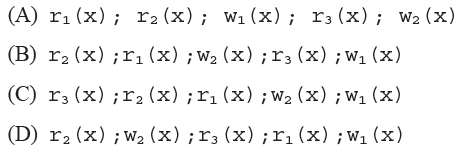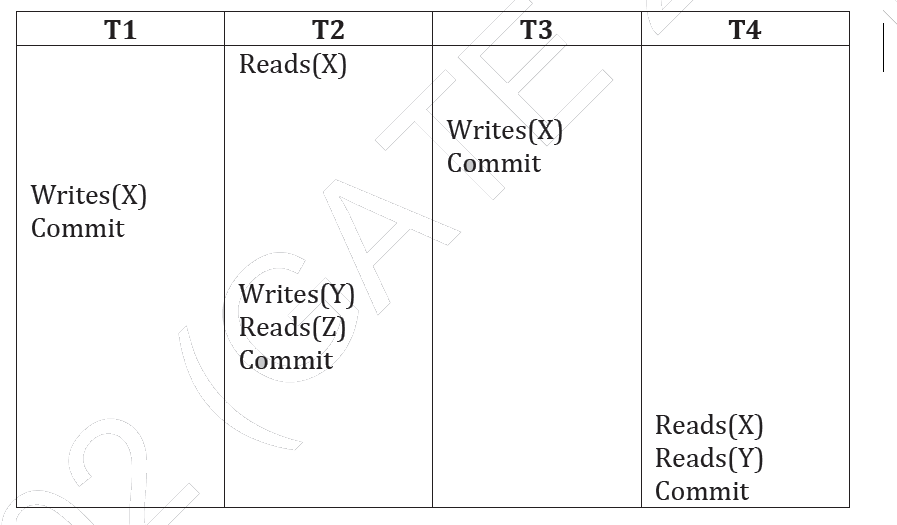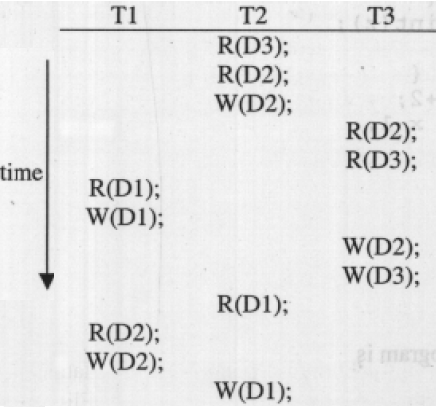Transactions and concurrency control
Question 1
Consider the following schedule for transactions T1, T2 and T3:
[caption width="800"] [/caption]
[/caption]
Which one of the schedules below is the correct serialization of the above?
Question 2
Question 3
Question 4
Consider the transactions T1, T2, and T3 and the schedules S1 and S2 given below.
T1: r1(X); r1(Z); w1(X); w1(Z)
T2: r2(Y); r2(Z); w2(Z)
T3: r3(Y); r3(X); w3(Y)
S1: r1(X); r3(Y); r3(X); r2(Y); r2(Z);
w3(Y); w2(Z); r1(Z); w1(X); w1(Z)
S2: r1(X); r3(Y); r2(Y); r3(X); r1(Z);
r2(Z); w3(Y); w1(X); w2(Z); w1(Z)
Which one of the following statements about the schedules is TRUE?
Question 5
Consider the following log sequence of two transactions on a bank account, with initial balance 12000, that transfer 2000 to a mortgage payment and then apply a 5% interest.
1. T1 start 2. T1 B old=12000 new=10000 3. T1 M old=0 new=2000 4. T1 commit 5. T2 start 6. T2 B old=10000 new=10500 7. T2 commitSuppose the database system crashes just before log record 7 is written. When the system is restarted, which one statement is true of the recovery procedure?
Question 6
Consider the given schedule and choose the suitable option.
S = T1:R(x), T1:R(y), T1:W(x), T2:R(y), T3:W(y), T1:W(x), T2:R(y)
Question 7
Which of the following scenarios may lead to an irrecoverable error in a database system ?
Question 8
Question 9
Consider the following transaction involving two bank accounts x and y.
read(x); x := x – 50; write(x); read(y); y := y + 50; write(y)The constraint that the sum of the accounts x and y should remain constant is that of
Question 10
Consider a simple checkpointing protocol and the following set of operations in the log.
(start, T4); (write, T4, y, 2, 3); (start, T1); (commit, T4); (write, T1, z, 5, 7); (checkpoint); (start, T2); (write, T2, x, 1, 9); (commit, T2); (start, T3); (write, T3, z, 7, 2);If a crash happens now and the system tries to recover using both undo and redo operations, what are the contents of the undo list and the redo list
There are 48 questions to complete.
Last Updated :
Take a part in the ongoing discussion


